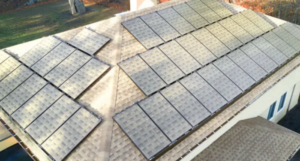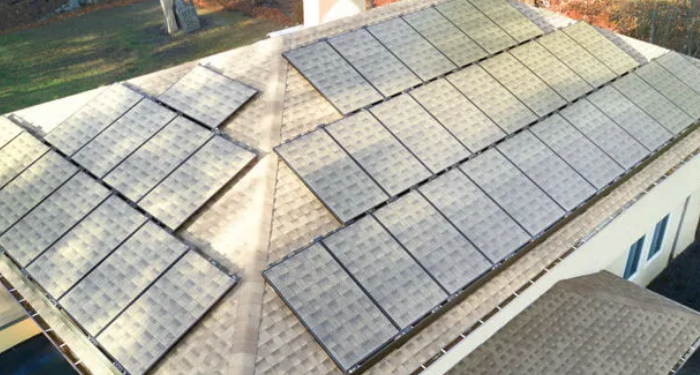A New Generation of Solar Skins: Making Urban Sustainability More Pleasing Aesthetically The world of solar is changing. Traditional solar panel designs clash with the aesthetic appeal desired within an urban environment. Solar skins are emerging now as a fancier alternative-renewable energy combined in an artistic, avant-garde manner.
These new, creative solar panels solve the problem for those homeowners who care about both sustainability and appearance. Thanks to the skins, they may reduce the carbon footprint without compromising on the look of their homes. This growing trend is making solar energy both more accessible and more appealing in city landscapes.
It brings much-required use of solar energy in places where it is needed most, which means a lot for urban areas. The more information is available, the more people can make better choices that help both their energy consumption and the environment.
Key Takeaways
- Solar skins are a good alternative to traditional solar panels, aesthetically speaking.
- This technology helps ensure that the urban areas can employ renewable sources of energy.
- Utilization of solar skins will lead to more sustainable living.
Solar Skins Technology
Solar skins are an emerging technology that renders solar panels more visually appealing and suitable for urban applications. Merging function and fashion, this technology lets homeowners and businesses switch to solar energy without any compromise on their property’s looks.
Concept and Design
These solar skins are based on custom designs that can merge with different building styles. Instead of the standard blue or black panels, solar skins have a number of colors and even patterns. This capability makes it easier for city environments to make use of solar energy without disturbing the visual harmony.
This design process will allow the users to choose certain images or textures; this personalization could also match roof shingles or other types of architectural elements. Solar skins will retain the functionality of the standard panels and add more aesthetic appeal to a building.
Integration within Urban Infrastructure
Solar skins blend into the general structure of cities, which can be installed atop residential areas, commercial buildings, or even integrated into building materials. Therefore, they can be easily adopted into heavily space-constrained cities. In new developments, it allows urban planners and architects to work in tandem, integrating solar skins into the overall design. Projects created this way bear more significant results in generating clean energy and beautifying cityscapes.
Improvement of Photovoltaic Materials
The development of the photovoltaic material forms the backbone of the technology in solar skins. New materials mean increased efficiency and durability, thus an assurance of the occurrence of high performance at different conditions.
Thin-film materials are lighter and result in less expensive installation processes. The efficiency in energy conversion rates ensures the capability of a solar skin in producing more wattages against space.
These facilitate access and make solar energy more attractive to a wider audience. Due to continuous technological improvement in development, the prospects for solar skins look promising, and growth in urban sustainability should be fostered.
Impact on Urban Sustainability
The solar skins usher in enhancing urban sustainability by offering energy efficiency and promoting community acceptance and economic opportunities. All these factors together grow a cleaner and greener urban environment.
Energy Efficiency and Reduction of Carbon Footprint
Solar skins help increase energy production within urban centers by integrating into the appearance of the building in a way that can encourage more participation from both homeowners and businesses in using this technology.
This could go as far as the unprecedented effect of dramatically reducing carbon footprints. Thus, cities can reduce their dependence on fossil fuels as more buildings use solar energy.
Solar skins mean better energy efficiency, particularly in high-population cities. This will have advantages to make cities increasingly adopt renewable energy resources, making urban regions clean and sustainable.
Aesthetic Appeal and Community Acceptance
The architecture behind solar skins beautifies the installation of solar panels. Since the structures of these devices are similar to conventional roofing materials, they easily blend into cityscapes.
This aesthetic appeal translates into higher acceptance rates among residents. Most communities have opposed solar projects because they do not want the negative visual impact.
By mitigating that concern, solar skins support the diffusion of solar energy. When residents like the looks of solar panels, then they are more likely to favor sustainability initiatives.
Economic Implications for Cities
They can economically empower cities: many times, come with increased property values, as homes turn more attractive due to the solar solutions on them.
Besides, such installations create local jobs in manufacturing and installation. As the demand for aesthetic solar panels goes higher, new businesses and opportunities emerge.
Cities might also see more investment in green technologies. This, in turn, encourages other sustainable practices that further boost the local economies and develop the community.

Also Read :
- The Role of Solar, Wind, and Hydropower in a Sustainable Future
- One unique solar technology gaining attention is solar paint
- Harnessing the Power of the Wind: Future Innovations in Wind Energy
- Innovations in Renewable Energy: What’s Next for Green Technology?
- The Best Power Banks for South African Travelers in 2024
